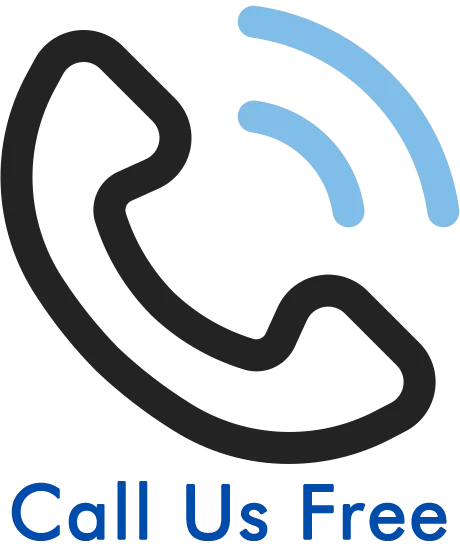How Much Compensation Could I Get From An Accident At Work Claim?
Last Updated On 30th September 2024. Being hurt while working can have a serious impact on your life. If you were injured in an accident because of a negligent third party, you could make an accident at work claim with an expert solicitor’s help.
Our detailed guide to workplace compensation explains when you can claim and what will help your case succeed. We also discuss the key question of how much compensation for an injury at work you might be able to get.
Furthermore, learn how the trained workplace accident claim solicitors on our panel offer professional support under No Win No Fee terms.
As an employee, you have a right to claim compensation for a workplace injury if your case is valid. Our advisors can check if you have a case, as well as answering any accident at work-related questions. To make the most of this free service provided by UK Law, just choose one of these options:
- Calling 020 3870 4868
- Filling in an online contact form.
- Using the live chat function at the bottom of this page.
Browse Our Guide
- What Is An Accident At Work Claim?
- What Types of Negligence Could Lead To An Accident At Work Claim?
- How Do I Prove A Workplace Injury Claim?
- What Is The Time Limit For A Work-Related Injury Claim?
- How Much Compensation For An Injury At Work?
- Can I Make An Accident At Work Claim If I Was Partially Responsible?
- Do My Injuries Need To Be Assessed To Claim Accident At Work Compensation?
- Can I Be Sacked For Making A Workplace Accident Claim?
- Claim Work Injury Compensation On A No Win No Fee Basis
- More Resources About Claiming For Workplace Accidents
What Is An Accident At Work Claim?
There are many different ways you could have an accident at work. To claim compensation you need to show that your employer was at fault. Under the Health and Safety At Work etc. Act 1974 (HAWASA) your employer owes you a duty of care and must take all reasonably practicable steps to keep you safe at work. This could include making sure you have sufficient training to do your job role, risk assessing the task you are doing and generally keeping your workplace in a good state of repair. Failure to do so could lead to you becoming injured.
Over time, more legislation that protects workers from harm has come into force. The Personal Protective Equipment at Work Regulations 1992 states that employees should provide suitable PPE and a failure to do so could cause you to become injured. Work equipment should also be suitable and well maintained as set out in sections 4 and 5 of The Provision and Use of Work Equipment Regulations 1998.
There are also specialised statutes (laws your employer should follow) to be considered when working at height, with hazardous materials and also when on a construction site. In addition there is a regulatory body called the Health and Safety Executive (HSE) that is responsible for enforcing these laws. So in summary, there are many rules and regulations that are in place to try and prevent injuries at work.
Workplace Accident Claim Eligibility Criteria
In general, to make a successful accident at work claim you will need to show that:
- Your employer owed you a duty of care under health and safety legislation.
- They breached this duty. For example, by failing to carry out risk assessments that would have shown PPE was required to safely carry out work tasks.
- You became injured as a result of the breach. For example, you sustained an eye injury because of the lack of PPE.
We will cover some specific examples in the next section, but if you would like to get some free advice now, please contact our team to discuss.
What Types of Negligence Could Lead To An Accident At Work Claim?
Whilst we cannot run through every scenario that could result in a workplace injury, here are some examples that would likely be strong cases:
- You are hit by a falling object dropped by a colleague. Your employer did not provide you with a hardhat and you suffered a serious injury.
- Your employer fails to give you manual handling training and asks you to move heavy boxes. Due to your inexperience, you injure your back when performing this task.
- Due to poor lighting at work, you fall down the stairs fracturing your wrist.
- There is defective machinery at your workplace and your employer does not fix it even though they know about it. The machine malfunctions and you suffer a significant crush injury.
If you have been injured whilst carrying out a work-related task that you think was unsafe, it is always best to check with someone who has expert knowledge of workplace injuries to see if you have a potential accident at work claim. Contact us to discuss your exact accident circumstance for free and with no obligation.
How Do I Prove A Workplace Injury Claim?
A successful accident at work claim will require evidence. You will need to prove that your employer breached their duty, that you were injured and also prove any financial losses your injuries have caused you.
The evidence needed in each case will be different but some things you might need include:
- Accident report form
- CCTV footage of the accident
- Photographs of the accident site
- Contact details of witnesses (a statement may be needed if you case is disputed)
- Medical records
- MRI scans and X-Rays
- Photographs of your injuries
- Wages slips
- Invoices or receipts
This list is not exhaustive and there could be other items or documents that are needed. A personal injury solicitor can help you with the evidence you might need.
What Is The Time Limit For A Work-Related Injury Claim?
In general you have 3 years from the date of your accident to start your compensation claim. The Limitation Act 1980 governs this area of law and there are certain exceptions to this time limit such as if the accident involves a person under the age of 18 or if the person injured lacks the mental capacity to bring their own claim. In these circumstances a litigation friend can bring a claim on the person’s behalf and the standard 3 year period could be extended.
If you have any questions about time limits, or making an accident at work claim in general, you can contact our friendly team today.
How Much Compensation For An Injury At Work?
Your settlement for a successful accident at work claim, could consist of up to two types of damages. These are compensation for your pain and suffering (general damages) and compensation for your out pocket expenses or financial loss caused by your injuries (special damages). How much compensation is awarded for an injury depends on its severity, the level of pain involved and the wider impact it has on a person’s life.
Your legal advisor may use a medical report (more on this in a subsequent section) and the Judicial College Guidelines (JCG) to offer advice on the level of compensation you could be awarded. The JCG puts injuries into categories and gives some guidance on how much compensation could be awarded. Each case is different as every person will have different injuries, symptoms and unique circumstances, but using the JCG we have made a table of some potential compensation awards:
| Injury | Severity | Compensation Guideline |
|---|---|---|
| Multiple Severe Injuries And Additional Special Damages | Very Severe | Up to £1,000,000+ |
| Brain Injury | Moderate (c) (i) | £183,190 to £267,340 |
| Loss of one hand | Serious (c) | £117,360 to £133,810 |
| Pelvis and hips | Moderate (b)(i) | £32,450 to £47,810 |
| Elbow | Less Severe Injuries (b) | £19,100 to £39,070 |
| Leg | Less Serious (c)(i) | £21,920 to £33,880 |
| Back | Moderate (b)(ii) | £15,260 to £33,880 |
| Arm | Simple Fracture | £8,060 to £23,430 |
| Ankle | Modest (d) | Up to £16,770 |
| Toe | Serious (d) | £11,720 to £16,770 |
Please note that these are just examples and are not guaranteed figures. The top line entry also does not come from the JCG.
Can I Claim For Loss of Earnings In A Workplace Accident Claim?
One of the most worrying things about an accident at work is the impact it can have on you financially. If you are unable to work because of your injuries, this can create pressure as bills need to be paid. Problems can mount up quickly if you are not earning wages.
If you are off work because of your symptoms and you do not receive full pay, you could be able to claim for loss of earnings as part of your case. You would need to be able to evidence this loss, so providing some form of payslips of bank statements might be required.
It is possible that your loss of earnings is ongoing and your ability to earn in the future is reduced. These are things that could be explored as part of your claim and it could even include things like missing bonus payments or loss of pension entitlement due to time away from work.
To get the best possible compensation award for you accident at work claim you need expert advice. Please contact our team today so we can assist you with your claim.
Can I Make An Accident At Work Claim If I Was Partially Responsible?
You can still claim compensation for a workplace accident, even if you were partially responsible. If you were partly the cause of your own injuries, then this is known as contributory negligence. This could lead to your damages being reduced by a percentage to reflect your actions.
For example, your employer may have given you a hardhat as PPE but you didn’t wear it. If due to a co-worker’s negligence an object was dropped on your head from a raised platform, you could have your damages reduced. You did not cause the accident, but your failure to wear your hardhat may have contributed to the severity of your injuries.
Contact an advisor to find out if you could make an accident at work claim, even if you were partially responsible for your injuries.
Do My Injuries Need To Be Assessed To Claim Accident At Work Compensation?
An independent medical assessment of your injuries is usually required to help value your accident at work claim. This medical report will detail out your symptoms to date and also give you a prognosis for the future. This document will be used by your legal representative and your employer’s insurance company to calculate your damages.
A medical appointment with an independent doctor can be arranged by your legal representative at a time convenient to you.
Can I Be Sacked For Making A Workplace Accident Claim?
A worry that you may have is the adverse reaction your employer may have to you making a personal injury claim against them. You might worry that you will even be sacked. Whilst this is normal to be concerned, it is illegal for your employer to sack you or discriminate against you after an accident at work. If they did either of these things, you could potentially bring a separate claim against your employer for their actions.
It is important to bear in mind that your employer will have insurance to cover accidents that happen at work. Your damages will likely be paid by this insurance company. Also, most employers want to keep their employees safe and would like to improve their working practices and environments to prevent future accidents and injuries. You are well within your rights to make an accident at work claim.
Claim Work Injury Compensation On A No Win No Fee Basis
If you are eligible to make an accident at work claim, you may like to have support from an experienced personal injury solicitor. One of the solicitors from our panel could help you claim. The expert solicitors on our panel operate on a No Win No Fee basis by potentially offering you a Conditional Fee Agreement. This offers some benefits including:
- Not having to pay fees upfront at the start of your case.
- Not having to pay fees for ongoing work.
- Nothing to pay for their work on your case if you are unsuccessful in your claim.
- A success fee will be due to your solicitor if the claim is successful. This is a fixed percentage and this will be agreed before your case starts. There is a statutory imposed maximum amount that the success fee can be. This means you will keep the bulk of your damages.
If you would like to work with one of our panel solicitors, who are experts in personal injury claims, please get in touch by:
- Calling us on 020 3870 4868
- Using our claim online form.
- Using the live chat function at the bottom of your screen.
More Resources About Claiming For Workplace Accidents
We hope this summary about claiming after an accident at work was useful. If you have any further questions you can contact us using the details above. If you would prefer to read some more information, the following guides might be useful to you:
Internal resources
- Have you been injured at work caused by understaffing?
- Learn how to make a claim if you are injured due to a broken ladder at work.
- Would you like to know how to make a claim if you trapped your finger in a door at work?
External resources
- Do you know when you are able to receive Statutory Sick Pay (SSP)?
- Check your rights as an agency worker with the Citizens Advice Bureaux (CAB).
- Learn what to do if someone is injured in this NHS guide about first aid.
Thank you for taking the time to consider our accident at work claim guide.










